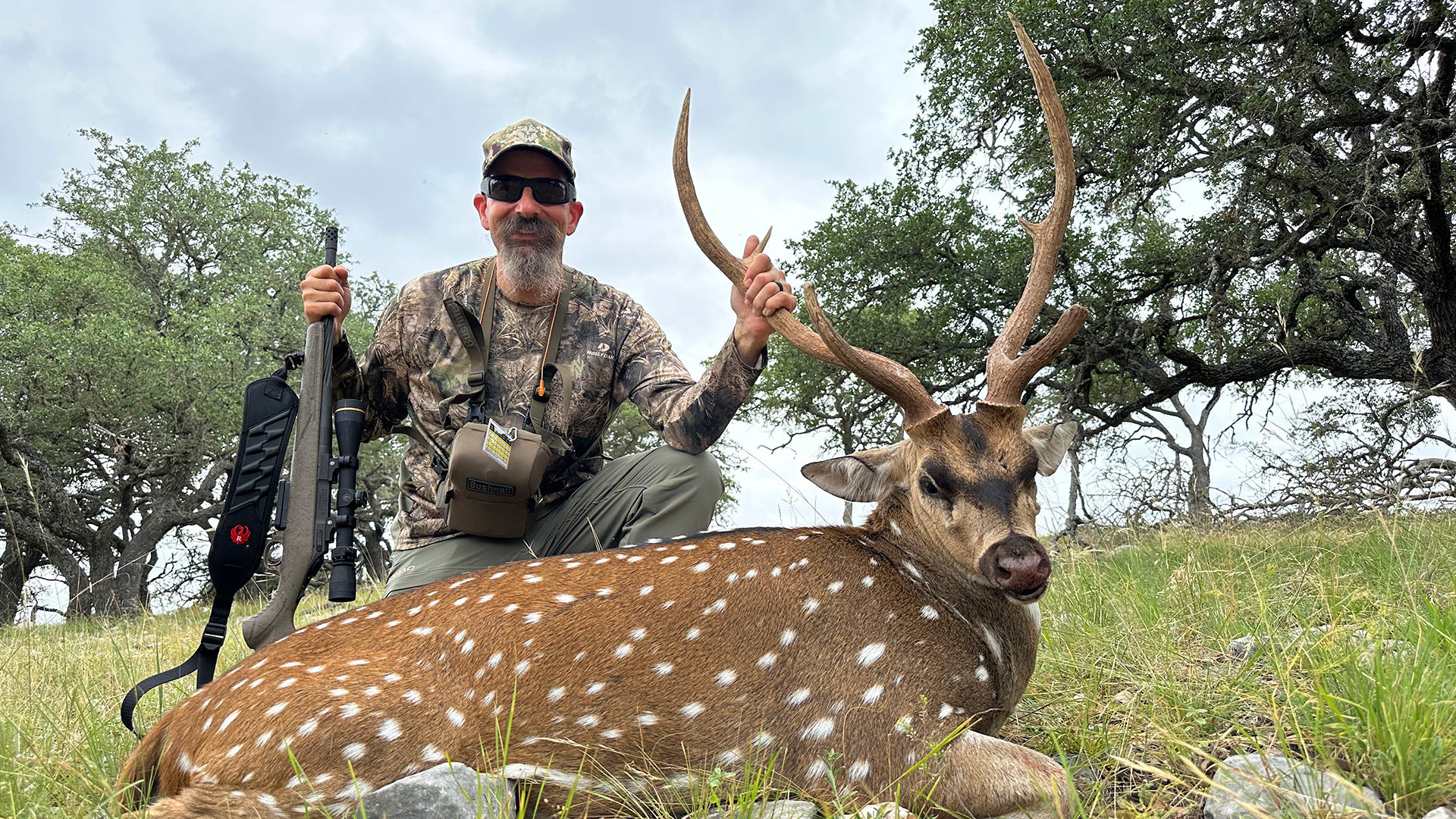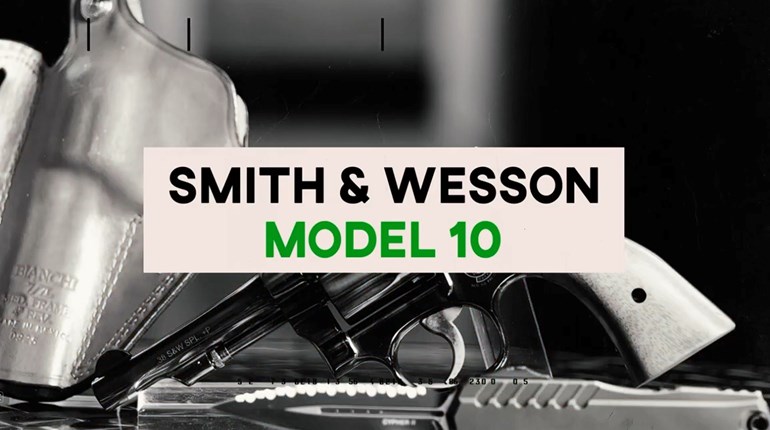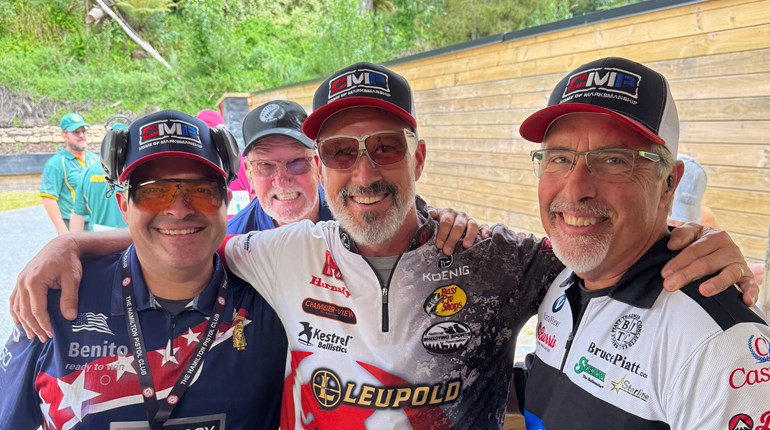
I get to do an insane amount of cool stuff for Shooting Illustrated; however, generalized hunting isn’t one of them. You see, we have an excellent magazine for the hunter in American Hunter, so all the cool hunts go to the talented editors there. Here. Heck, you know what I mean. Bottom line is, I don’t often get the chance to hunt.
You can understand my confusion—and elation—when I was asked to cover an Axis deer hunt in Mountain Home, TX, with Ruger to celebrate the launch of its Ruger American Gen 2 Ranch Rifle in .308 Win. I’ve had the opportunity to hunt feral hogs a few times, and I’ve shot prairie dogs a bunch of times as well, but I have never had the opportunity to hunt a game animal. With the launch of the Ranch Rifle, I had my chance.

Growing up, hunting was something that dad and grandpa did back when money was tight and hunting meant protein on the table. Heck, I was 13 before I realized that rabbit wasn’t supposed to have pellets in it, but I digress. There’s a grand total of one mount—my dad’s first pheasant—in my parent’s house, and it was relegated to the semi-finished basement. Dad and grandpa were both cops, dad a state police officer and grandpa an auxiliary town police officer. Guns were tools, part of the gear they carried every day; somewhere along the line the gene mutated, and I got the “gun enthusiast” part cranked up to 11.
Hunting, though, was something we never did; partly because the opportunities in the northeast changed by the time I was of age to go hunting, and partly because neither dad nor grandpa hunted any more. I didn’t get to experience the excitement of waking up on opening day of hunting season; I barely knew what hunting season was. I don’t even recall a lot of my friends hunting with their dads; it just wasn’t a part of our lives in the suburbs of Massachusetts. I’ve never been averse to it, I’ve just never had the chance to go out in the field and chase an animal.
With this invitation, that all was about to change. I’d definitely say I was equal parts excited and terrified—I mean, I’ve never hunted before. What if I screw things up? There are so many different things that come as second nature to folks that grew up steeped in the hunting tradition that I never got to experience; heck, I have a hard time identifying the different species of deer. One thing that wasn’t a concern, fortunately, was my proficiency with a rifle; while I’m far from an expert long-range shooter, I have had quite a bit of training from some of the experts in the business. As long as I can get within 100 yards or so of the animal, I figured, making a good shot should be fairly straightforward.
The first day of the event had us arriving at the ranch mid-afternoon, with enough time to check zero on the rifles. The Ruger American Gen 2 Ranch rifle is lightweight, well-equipped and represents a truly modern hunting rifle. It has a removable magazine, a spiral-fluted barrel and is threaded for a sound suppressor or muzzle device. There’s a Picatinny rail on top of the receiver to mount any optic you desire, and the rifles we used had Leupold VX 3HD 4.5-14x scopes set up on direct-mount rings. One very minor adjustment was made to the elevation, and three quick shots in less than 1 MOA confirmed the rifle was spot-on.
Hornady provided 178-grain ELD-X ammunition for us to use on the hunt, and I’ve had excellent results with the company’s long-range ammo (in addition to its defensive ammo being top-notch, as well). We were encouraged to bring binoculars and other gear that might help us, and I happened to have a set of Bushnell Fusion X 10x42mm rangefinding binoculars on hand.
I mentioned I don’t do a lot of hunting, right? One area where I was woefully deficient is in good hunting gear. With a bit of frantic reaching out to friends in the business (basically me pleading, “I know nothing about camo! Help!”), folks at Kryptek and Nomad Outdoors offered lightweight shirts and pants, and LaCrosse Ursa ES boots that required a bit of breaking in, but once molded to my feet were simply excellent for the many miles of walking I’d do over the course of the event. The mission drives the gear train, as it were; while I have a good deal of “tactical” gear, precious little of it is designed for stalking animals in the south Texas fields. Thankfully, the gear from Krpytek and Nomad Outdoors was more than sufficient.
After sighting in the rifles, we went out in side-by-sides to check out the deer population. Knowing that I was new to hunting, the guide wanted to make sure I knew how to spot an Axis deer, as the ranch where we were hunting had many different species, some of which look (at a distance) somewhat similar (well, to me, that is; I was hunting with two other extremely experienced hunters who could identify not only the exact species, but how old the animal was, what it had for breakfast and whether it liked long walks on the beach or moonlit nights—okay, that last part might be made up, but I felt powerfully ignorant amongst these experienced folks).
The next morning, we split into two groups to cover different sections of the 7,000-acre ranch. Each buggy had a hunter (or two) along with an experienced guide and an accomplished big-game hunter. The guide brought us to several areas where Axis deer were known to congregate; we caught a glimpse through trees a handful of times at the first area, but in the second place we looked, there were many bucks. Most were young, some fairly small, but there was a moment when one of the larger bucks stood at the top of a ridge, his back to the sun, and looked right at us. At that moment, I got it. I understood the drive that brings people out in the field, eating up spare time and money, in the pursuit of the right animal.
Unfortunately, the moment was just that; something spooked the herd and they took off over the ridge and into the treeline. The chase was on! The guide and the other hunter in the side-by-side desperately wanted me to succeed on my first deer hunt, that much was crystal-clear; we took off for other areas. Lunchtime came, and with it a brief respite from the brutal Texas heat, but shortly we were off again, this time to another location a few miles down the road. Here there were fewer species running around, which helped me identify the Axis deer better (I’m still a babe in the woods when it comes to telling different species apart. I spent a lot of time yelling, “There’s one! A brown one!” Look, I said I was new at this …).
At the end of the first full day, we had seen quite a number of possible deer, but a combination of distance, cover and the potential for a larger, more mature animal held my trigger finger. I was still trying to process everything, but one thing that struck me was how intense the hunt can be; over at Shooting Illustrated we often talk about adrenaline and how it can affect someone in a defensive situation—it’s pretty comparable to stalking an animal and having a split-second to set up a shot. Our worlds aren’t really that different, after all, when it comes down to it.
At the start of the second full day, half of our group had already killed their Axis deer. It’s down to me and one of the Ruger guys along for the trip, so we decided to split into two groups and go to two different areas of the ranch. We spotted a large, mature Axis deer, but by the time we got into position, the group had moved on. We traveled to several additional areas of the ranch, finally finding another buck that looked promising and stalked up on it, only to discover that he appeared larger from farther away … .
After striking out in another location known as an Axis deer hangout, we decided to head back in for lunch. On the way, though, we came across a large herd of Axis, complete with a decent-size buck. The herd covered quite a bit of ground, and we noticed they were starting to slow down as we started to catch up to them. When they stopped, we stopped—about 200 yards away. Several bucks were in the group, but the largest was the one I had in my sights. I didn’t have time to dial the scope for the farther distance, so I opted to hold over. The stars aligned, he turned broadside to me, and the deer behind him moved out of the way, and I pressed the trigger on what would be my first deer ever.
The guide and the other hunter in the side-by-side both agreed that my deer was hit, and hit hard. They both commented that he “bucked” (which, I’m sure most folks understand, but he jumped straight up in the air. I missed it; I had shot over the roof of the side-by-side, and the combination of recoil, adrenaline and the gun bouncing off the plastic roof rendered me unable to spot my own shot) and had definitely been hit in a critical location. The herd had paused on a slight ridgeline, and we assumed that once we went over the ridge, we’d see my downed deer.

To my horror, we broached the ridge to find no sign of a deer. No blood trail. No broken branches that might indicate an animal stumbled through. The guide found some tracks that broke left going down the ridge, so we fanned out and started looking for any indication where my deer went. We must have covered at least a quarter to a half mile without finding a trace. I was starting to think I’d made a poor shot and was mentally kicking myself for not getting closer. Earlier, I’d reasoned with myself that 100 yards or less would be the ideal shot, something I’m definitely comfortable making. Stretching that out to 200 yards was a breach of that, but strange things happen when you’re the last person in your group to fill a tag. Even though both the guide and the experienced hunter assured me I’d made a solid hit, I was definitely not feeling very good at that moment.
After what seemed like an eternity of searching and finding nothing, we decided to go back to the beginning and start over. As I walked back to the site where I shot the deer, I replayed the scene in my head endlessly. I knew I’d placed the crosshairs properly, and I knew the trigger press had been a solid one—I didn’t anticipate, flinch or otherwise pull the shot. Had I miscalculated my hold? Gotten the angle wrong? It was devastating to think that my error might have caused suffering, and I was starting to question if I should just stick to defense-oriented and/or long-range events from here on in. Steel targets don’t care if they’re hit low.
When we got back to the original site, something caught my eye over to the right immediately after cresting the ridgeline. I made a quick scan of the area, and noted with intense relief that my buck was perhaps 50 yards away. Ironically, it was even closer to the point where the guide and I turned to look to the left. It was quite a relief to know that I’d made an ethical shot that downed the animal quickly.

So, I’m buying the Ruger American Gen 2 Ranch Rifle I used on this hunt. I feel I owe it to my grandfather, whose “deer gun,” a Marlin Model 336, is in my possession, to complete the circle and keep my first “deer gun.” Besides, who couldn’t use a lightweight hunting rifle chambered in a popular caliber that’s a heck of a shooter?
As for hunting, while I’ve always understood and supported folks who enjoy getting out in the field, until now, I’ve never felt that drive. Having chased after a deer, having stalked up on an animal only to have it bolt at the last second, to feel that disappointment, well, I think I have a better idea. I might not be booking my trip to Africa quite yet, but I am kinda thinking of pestering some friends who hunt locally to see if I can get in on some Virginia whitetail.
I mean, after all, I’ve got the perfect rifle for it, and (a little) room in the freezer … .




































